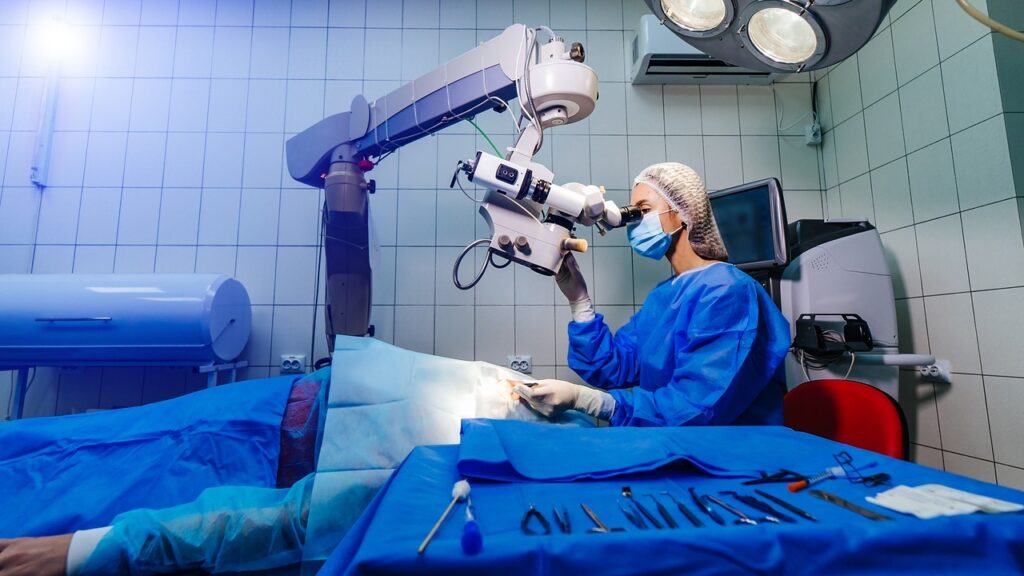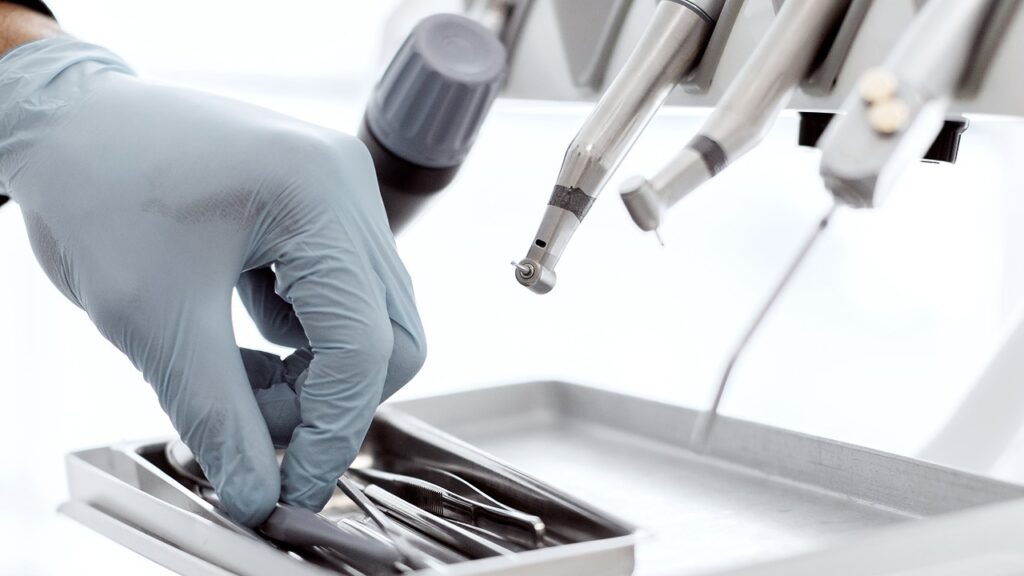Last Updated on November 4, 2025 by Bilal Hasdemir

Many people worry about robotic prostatectomy surgery. At Liv Hospital, we focus on giving you the best care and support during your recovery.
Robotic prostatectomy, or robotic-assisted prostate surgery, is a new way to treat prostate issues. It’s less invasive, meaning less blood loss and pain after surgery. Most people go home within 24 hours after the surgery.
It usually takes 4 to 6 weeks to get back to your usual life after surgery.

Robotic prostatectomy is a new way to treat prostate cancer. It uses the da Vinci Surgical System. This system gives the surgeon a clear, 3D view of the area being operated on.
Robotic-assisted prostate surgery is a new kind of surgery. It’s less invasive and allows for precise removal of the prostate gland. Experts say it causes less damage and helps patients recover faster.
The robotic method has many benefits over traditional surgery. Some of these advantages are:
Robotic surgery leads to less blood loss than traditional surgery. This means fewer complications and a smoother recovery.
The da Vinci System gives surgeons a clear, 3D view. This allows for precise removal of the prostate gland. This precision is key to good results.
| Benefits | Robotic Prostatectomy | Traditional Open Surgery |
|---|---|---|
| Blood Loss | Minimal | Significant |
| Surgical Precision | High | Moderate |
| Recovery Time | Faster | Longer |
“The robotic system allows for a more precise and delicate surgery, which is important in prostate cancer treatment.”
— Dr. [Last Name], Urologist
Understanding robotic prostatectomy helps patients make better choices. The robotic method offers many benefits for a quicker and more comfortable recovery.

Patients often wonder how long robotic prostate surgery takes. On average, it lasts between 2 to 4 hours.
Robotic prostatectomy uses the Da Vinci Surgical System. It’s a detailed procedure that needs careful attention. The time it takes can change based on the case’s complexity and the surgeon’s skill.
Several things can affect how long the surgery lasts. These include the patient’s health, the cancer’s stage, and the surgeon’s experience with the robotic system.
The Da Vinci Surgical System is a cutting-edge tool for surgery. Our skilled surgeons use it for precise, minimally invasive procedures. This approach helps reduce risks and speeds up recovery.
The time right after surgery is very important. It’s when you start to heal and get back to normal. This period is key for a good recovery.
Most people stay in the hospital for just a day or two after robotic prostatectomy. Going home quickly is a big plus of robotic surgery. It means less pain and faster healing.
In the first day or two, rest is important. But, getting up and moving a bit is also good. It helps your blood flow and lowers the chance of problems. Walking a little helps your body heal faster.
Moving around early is very helpful. Doing gentle exercises and short walks helps keep your blood flowing. Always listen to your doctor about how much and how often to move.
Following these tips can really help your recovery after robotic prostatectomy. It’s all about moving a bit and listening to your body.
Knowing the recovery timeline is key for patients after robotic prostatectomy. The healing process after this surgery is slow and varies from person to person. It usually takes several weeks.
In the first week, rest and slowly move more. Try to avoid hard work to help your body heal. You will see big improvements during this time.
Weeks 2-4 bring more strength and feeling better. Start to do normal things again with your doctor’s okay. This is when you start to get back to your usual self.
By weeks 4-6, you can do most things you used to. Keep following the instructions from your doctor to heal well.
After 6 weeks, you might keep getting better. Keep a healthy lifestyle and go to all your doctor’s appointments. This is important for a full recovery.
Learning how to manage your urinary catheter is key to a smooth recovery after robotic prostatectomy. This catheter is used for a short time after surgery.
The catheter is usually removed within one to two weeks after surgery. It’s important to follow the catheter care instructions closely to avoid complications.
Proper catheter care includes several important steps:
To clean the catheter site, gently wash the area with mild soap and lukewarm water. It’s essential to clean the area daily to prevent infection.
If you feel discomfort, pain, or have trouble urinating, call your healthcare provider right away. Most issues can be fixed with simple changes to your catheter care.
When the catheter is removed, you might feel some discomfort or leakage at first. This is normal and usually goes away quickly. Your healthcare team will guide you on what to expect and how to handle any problems.
After robotic prostatectomy surgery, patients face many physical symptoms. It’s key to manage these symptoms well for a smooth recovery.
Pain management is very important after robotic prostatectomy. Doctors usually give pain meds to help with discomfort. It’s important to take the meds as told by your doctor for the best pain relief.
Some swelling and bruising are normal after robotic prostatectomy. Swelling and bruising usually get worse in the first 2-3 days and then get better. Using ice packs as your doctor suggests can help with swelling.
It’s important to take good care of the incision site. This helps prevent infection and helps it heal. Keep the area clean and dry, and follow any special instructions from your healthcare team.
Fatigue is common during recovery. Start with short walks and gentle exercises to slowly build up your strength and energy.
Understanding and managing these symptoms helps patients recover more comfortably and effectively.
Patients can expect their urinary function to improve over time after robotic prostatectomy. Some see big changes in just a few weeks. Getting back to normal with bladder control is key to recovery.
The time it takes for continence to improve varies. But most patients see big changes in a few months. As they recover, bladder control gets better.
Kegel exercises and pelvic floor therapy are very important. We tell patients to do these exercises every day. They help strengthen the muscles needed for control.
Using incontinence products is a big part of recovery. We teach patients how to use them right. We also help them find ways to use them less as they get better.
Some incontinence after robotic prostatectomy is normal. But if it doesn’t get better or is very bad, you need to see a doctor. We want patients to get help if they’re having trouble controlling their urine.
| Recovery Stage | Continence Improvement | Recommended Actions |
|---|---|---|
| 0-3 months | Initial improvement in continence | Perform Kegel exercises daily |
| 3-6 months | Significant improvement in bladder control | Continue pelvic floor therapy |
| Beyond 6 months | Long-term continence improvement | Maintain a healthy lifestyle and pelvic floor exercises |
It’s important for patients to know how robotic prostatectomy affects sexual function. The recovery of sexual function is different for everyone.
Recovery of sexual function happens slowly, with some seeing big improvements in months. How fast you recover depends on your age, how well you could get an erection before surgery, and if nerve-sparing surgery was done.
Nerve-sparing surgery is key to keeping sexual function. It helps surgeons save nerves around the prostate. This increases the chance of keeping erectile function after surgery.
Studies show that nerve-sparing robotic prostatectomy leads to better sexual function recovery.
If you have erectile dysfunction after robotic prostatectomy, there are treatments. These include:
Doctors often prescribe PDE5 inhibitors like sildenafil or tadalafil. These drugs help by improving blood flow to the penis, making it easier to get an erection.
If you can’t or don’t want to take medication, there are other options. Vacuum erection devices, penile injections, and penile implants are available. Talking to a healthcare provider can help find the best treatment for you.
| Treatment Option | Description | Effectiveness |
|---|---|---|
| PDE5 Inhibitors | Medications that enhance blood flow to facilitate erections | High |
| Vacuum Erection Devices | Devices that use vacuum pressure to induce an erection | Moderate |
| Penile Implants | Surgical implants that enable erections | High |
The choice between robotic and traditional prostatectomy affects recovery. Robotic surgery offers benefits like shorter hospital stays and less pain. This makes it a better option for many patients.
Patients who choose robotic prostatectomy stay in the hospital less than those with traditional surgery. This is because robotic surgery is less invasive. It causes less damage and heals faster.
Robotic prostatectomy leads to less pain after surgery. The small incisions and precise robotic system cause less tissue damage. This results in less pain and discomfort during recovery.
People who have robotic prostatectomy get back to normal faster. The quick recovery is due to the minimally invasive method. It also helps avoid complications and speeds up healing.
| Recovery Aspect | Robotic Prostatectomy | Traditional Prostatectomy |
|---|---|---|
| Hospital Stay | 1-2 days | 2-4 days |
| Postoperative Pain | Less pain | More pain |
| Return to Normal Activities | 1-2 weeks | 4-6 weeks |
After robotic prostatectomy, patients can slowly get back to their daily lives. This includes driving, going back to work, exercising, and planning trips. Each step is important for a full recovery.
Doctors usually tell patients not to drive for one to two weeks after surgery. This is until they stop taking strong pain meds. It’s best to have someone with you when you start driving again. Your reaction times might be slower than usual.
The time it takes to go back to work depends on your job. If you have a desk job, you might return in one to two weeks. But, if your job is very physical, it could take three to four weeks or longer.
We suggest starting with short walks and then gradually increase the time and effort. Avoid heavy lifting and high-impact activities for at least six weeks.
When planning to travel after surgery, think about the distance and how you’ll get there. For long trips, make sure to take breaks to stretch and move. Also, have a plan for emergency medical care at your destination.
By following these guidelines, patients can safely and smoothly return to their daily activities after robotic prostatectomy.
We know how important follow-up care is after robotic prostatectomy. It helps us make sure you’re doing well. We keep an eye on your progress and fix any issues quickly.
How often you see your doctor depends on your needs and surgery details. Usually, patients see their doctor a few weeks after they go home.
PSA testing is key after prostate surgery. It checks for any signs of cancer coming back. This way, we can catch and treat any problems early.
Keeping up with long-term care is vital for your health after robotic prostatectomy. We suggest regular check-ups and PSA tests. This helps us catch any issues early.
| Follow-up Care Component | Timeline | Purpose |
|---|---|---|
| Initial Follow-up Visit | Within a few weeks post-discharge | Assess recovery progress |
| PSA Testing | Regularly scheduled (e.g., every 3-6 months) | Monitor for recurrence |
| Long-term Follow-up | Ongoing, as recommended by healthcare provider | Maintain optimal health |
The path to full recovery after robotic prostatectomy is unique for each person. At our institution, we focus on giving you the best care and support every step of the way.
With the right care, patients can have a successful recovery. It’s key to understand the recovery process, both physically and emotionally. This helps you navigate your journey well.
Recovery after robotic prostatectomy goes through several phases. It starts right after surgery and continues as you heal. The time it takes to recover can vary, but with our help, you can get the best results.
We are dedicated to providing top-notch healthcare and support to international patients. This way, we make sure you get the best care possible. We aim to help you recover smoothly and effectively.
Recovery after robotic prostatectomy surgery usually takes 4 to 6 weeks. During this time, you’ll start to feel stronger and can get back to your daily life.
The time needed for robotic prostate surgery varies. It depends on the case’s complexity and the surgeon’s experience. On average, it takes 2 to 4 hours.
Robotic-assisted surgery has many advantages. It results in less blood loss and less pain after surgery. You’ll also recover faster. The robotic system offers a clear view of the area, making the surgery more precise.
You’ll likely have a urinary catheter for one to two weeks after surgery. It’s important to follow proper care instructions to avoid complications.
You’ll probably stay in the hospital for a short time, usually less than 24 hours. In the first 24-48 hours, rest and slowly increase your movement.
Managing pain is key to a comfortable recovery. You’ll learn how to handle your pain and care for your incision to prevent complications.
Urinary function will improve over time. Some people see big improvements in a few weeks. Kegel exercises and pelvic floor therapy help a lot.
Sexual function will come back gradually. Some people see big improvements in a few months. Nerve-sparing surgery helps a lot.
You’ll get guidelines for when to go back to work, drive, and start exercising again. Follow a gradual approach to exercise and activity.
You’ll learn about the follow-up schedule and the importance of PSA tests. Understanding long-term monitoring is also key.
To recover faster, increase your activity slowly, eat well, and follow the recommended care plan. This will help you recover smoothly.
Subscribe to our e-newsletter to stay informed about the latest innovations in the world of health and exclusive offers!
WhatsApp us